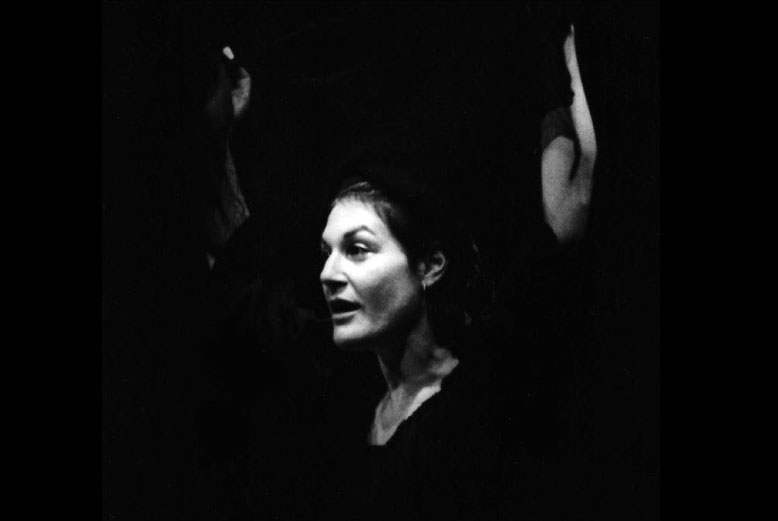
Based on text by Jami and other sources
Adapted for stage by the director
Cleveland Performance Art Festival
"Luminous…something shatteringly pure…something that overflows the accepted boundaries, which divides the mimetic from the real…"—Lisa Wolford, New Theatre Quarterly
This splendid spiritual parable of union with the divine through sensual love, was based on an outline of a Greek original supplemented by additional material from a variety of poetic sources, most notably by the 15th century Persian poet Jami.
[More]
The performance was staged using a single actor and two musicians who were positioned outside of the performance space. Drawing form the ancient Persian tradition of naqqali—storytellers who perform in public squares and teahouses—the director rejected props and defined stage setting. The performer alone on an empty stage used only a gnarled wooden stick to represent other figures in the story, transforming it at one moment into a horse, which he rode in a rhythmic, circular dance, and in the next into the figure of Absal, his radiant beloved. The musicians provided an interactive force to the performance, serving as an invisible partner.
What was most notable in Salaman and Absal, according to Wolford, was its realization of Saidpour's conception of ta'wil of action: a process through which the performer gradually leads the 'Visible', the 'Conscious', the 'Known' to the 'Invisible', the 'Unconscious' and the 'Unknown'. Through this process, the performer enters into a state of contemplative rapture and conduces this state onto the spectator.
"[Pancho] Colladetti's face became luminous, something in his body almost transparent as he related the epiphany he witnessed at the end of his ordeal… I was profoundly moved…something within me both awed and humbled by the power of love which the performer made visible. [Colladetti] understood, not on the level of words but gnosis. [The] actor…radiant with the sincerity of a trusting child, opened himself to something, offered himself so that this ineffable something could appear. What I perceived as a witness was not Salaman, a character in an ancient text, but Colladetti using the role of Salaman to cut through himself… Colladetti not only performed the external structure of the action, but made visible for the witnesses an act of ta'wil."